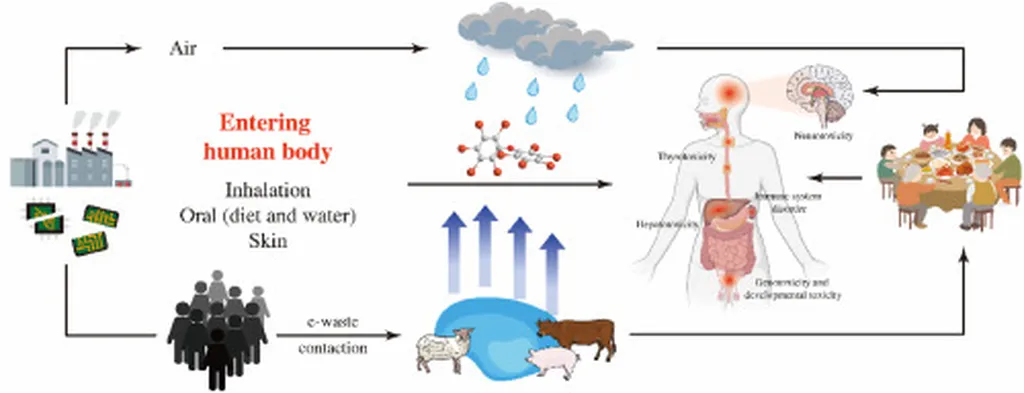In the heart of China’s bustling households, an invisible threat lurks in the dust beneath our feet. Polybrominated biphenyl ethers (PBDEs), once widely used as flame retardants in household products, have become a cause for concern due to their potential health impacts. A recent study, led by Xiaotong Zhang from the China CDC Key Laboratory of Environment and Population Health and Nanjing Medical University, sheds light on the levels, distribution, and health risks of PBDEs in household dust across China.
The study, published in the journal Indoor Environments (translated to English as “室内环境”), analyzed data from 26 peer-reviewed papers, focusing on eight specific PBDE congeners found in household dust. The results revealed a weighted average concentration of 3625.43 ng/g, with significant regional variations. Zhejiang province recorded the highest concentration at 27268.66 ng/g, while Shaanxi had the lowest at 4.03 ng/g.
“The concentrations of PBDEs in household dust in China are moderate to high compared to global standards,” Zhang explained. “This indicates a need for continued monitoring and management of these chemicals in our indoor environments.”
The study also found that BDE-209 was the predominant congener, making up 73.56% to 99.78% of the total PBDE concentration. Other notable congeners included BDE-47, BDE-99, and BDE-153. Interestingly, the concentration of PBDEs was higher in winter than in spring and fall, and families residing in rural areas, southern regions, or near e-waste-contaminated areas exhibited higher concentrations.
The health risks to children were assessed based on estimated daily intake (EDI) via ingestion and dermal absorption. The non-carcinogenic risk of HD-PBDEs was found to be below the standard criterion, as was the carcinogenic risk of BDE-209. However, the study emphasizes the importance of continued monitoring and research.
“This research is a wake-up call for the construction and energy sectors,” said a spokesperson for a leading green building organization. “As we strive for more energy-efficient and sustainable buildings, we must also consider the potential health impacts of the materials we use. This study highlights the need for safer alternatives to PBDEs and other harmful chemicals in our homes and workplaces.”
The study’s findings have significant implications for the energy sector, particularly in the context of green building and sustainable construction. As the demand for energy-efficient buildings grows, so does the need for materials that are not only effective but also safe for human health. This research underscores the importance of considering health risks in the development and implementation of new technologies and materials.
Looking ahead, the study calls for future investigations to focus on longitudinal monitoring of PBDE trends in household environments and health impacts on vulnerable subpopulations. As we continue to strive for a more sustainable future, it is crucial that we also prioritize the health and well-being of those who inhabit our built environments.
In the words of Xiaotong Zhang, “This study is just the beginning. We must continue to monitor and manage these chemicals to ensure the safety and health of our communities.”

